
Nikon F55 and AF 50mm f/1.8D, dwarfed by a Nikon D2H and 55-200mm VR.
from Shutter, by Lewis Collard

Nikon F55 and AF 50mm f/1.8D, dwarfed by a Nikon
D2H and 55-200mm VR.
This article was written in 2010 and is mostly unchanged since.
This is the Nikon F55, sold as the N55 in the United States. I'm a fan of plastic consumer SLRs, and so when I saw this one on eBay for £7 (yes, seven pounds) I couldn't turn it down, if only so my D2H wouldn't be so lonely, surrounded by hostile Canon gear as it usually is.
This was one of Nikon's last consumer film SLR cameras, built in 2002; only the consumer F75 and professional F6 succeed it, and it's unlikely that we'll see any more. It's pretty much what you'd expect from a modern plastic autofocus film SLR.
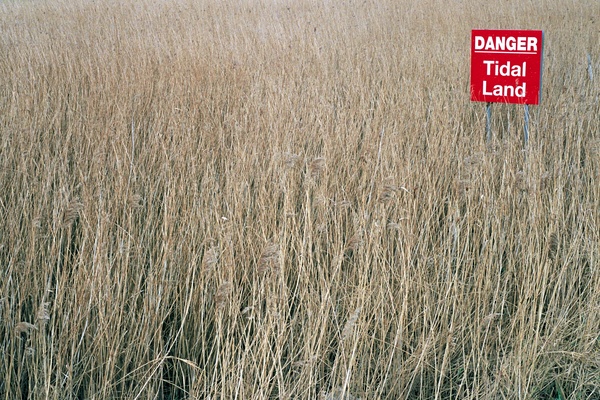
Tidal land. Nikon F55 and Nikon AF 50mm f/1.8D
shooting a free film.
If you're too lazy to read the rest of this page, then here's a summary. The good:
And now the bad. Remember, it's easy for me to complain about stuff, but the thing is, I don't even think about any of this stuff while shooting, so you don't have any excuse.
All plastic and 350 grams (minus batteries, and a lens). Yup, plastic includes the lens mount. I love cheap plastic cameras like this. I've carried bricks like the Canon T90 and the Nikon D2H around my neck for nine or more hours at a time, and I'll assure you that is not very fun at all. Plastic cameras like the cute little F55 are an absolute blast to carry around, because you don't notice that they're there. Sure, if you're an even worse gear-abusing idiot than me, then you'll end up breaking one. Who cares? Buy 10 of them and you'll probably end up spending less money than you would on any of the "serious" bodies.
It's also really small. Smaller than my other plastic miracle Pentax ZX-M. The lens you see in the picture at the top is a 50mm f/1.8, which is a very compact little lens. My D2H swallows a 50mm f/1.8 like me swallowing lasagna. Mmm, tasty, tasty lasagna.
You know what? I'm going to stick another cute comparison pic in here:

CAMERA SNUGGLE! :D
The only downside is that it's silver, not black. Of course, this is a conspiracy on Nikon's part; they don't want the biggest suckers (image-conscious photographers) to buy great little cameras cheaply, since nobody takes silver cameras seriously. I wonder what it would look like sprayed pink.

Hatch. Nikon F55 and Nikon AF 50mm f/1.8D,
aperture priority at f/9.5 and 10 seconds (as I recall), shooting a
free film.
You get programmed automatic, aperture priority, shutter priority and fully manual modes. You also get a bunch of silly scene modes, and an "Auto" mode which is like programmed automatic but without a shiftable program, and will pop the flash without you asking.
Given that it's Nikon's matrix metering system, I'd expect exposure to be bang-on accurate, even on slide film.
You can't set the ISO manually, so if you don't have a DX coded film you'll be shooting it at ISO 100, I believe. Non-DX-coded films don't exist anymore, unless you've found a very old roll of expired film
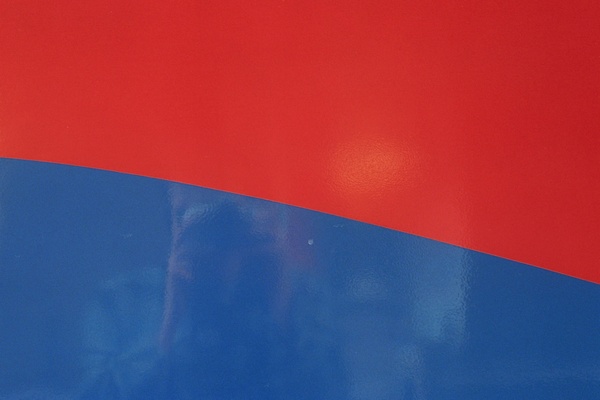
Red and blue, II. Nikon F55 and
Nikon AF 50mm f/1.8D shooting Kodak Portra 400VC. Yup, that's a
portrait film; I ran out of Ektar and that's what I had kicking around
at the time, so there. Also, my fingers keep wanting to spell it
"Porta".
Pretty good. It's a breeze to operate, and there are no surprises for people used to Nikon DSLRs. The only thing it's missing is a control dial at the front to operate the aperture in aperture-priority mode (you use the rear dial instead). This is the same as Canon SLRs.
I could nit-pick and say that the all-silver buttons are awkward to read, that the grippy covering isn't really grippy (almost hard plastic), and that I'd like the autofocus point selection button (which I don't need) moved somewhere else so my fingers don't confuse it with the exposure compensation button (which I do need). Or do away with it altogether; I could happily live with just one AF point, rather than the three, uselessly-tightly-packed ones of the F55. But it's a cheap plastic SLR! Who cares!

Circles. Nikon F55 and
Nikon AF 50mm f/1.8D shooting Kodak Portra 400VC.
Tiny (for a real camera) SLR pentamirror.
Sorry, I ran out of things to say there.
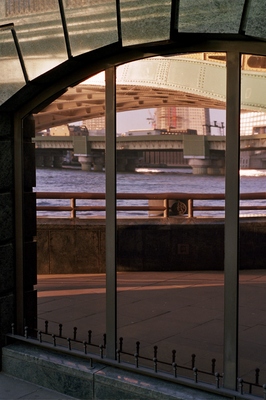
On reflection, IV. Nikon F55 and
Nikon AF 50mm f/1.8D shooting Kodak Portra 400VC.
You'll only get everything (autofocus and metering) with old school screw-type AF lenses. It won't autofocus with AF-S lenses, and won't even meter with AI and AI-S manual focus lenses.
Vibration reduction (VR) won't work on any lens. This makes sense; Nikon's VR lenses were (and to a lesser extent, still are, on full-frame cameras) big, professional telephoto lenses that an F55 would never encounter.
I was in a silly mood so I tried putting my 18-55mm DX and 55-200 DX VR on them. Despite being designed for the smaller sensor of digital cameras, lo and behold, vignetting wasn't noticeable at the longer focal lengths. Curiously, the camera refused to recognise the 18-55mm at all (the finder reads F-- and won't fire in anything but fully manual mode).
The kit came with a 28-80mm f/3.3-5.6 zoom lens. By all accounts this is a stupidly good lens, but I use it with Nikon's superb 50mm f/1.8D for being tiny and cheap (£100 shipped).
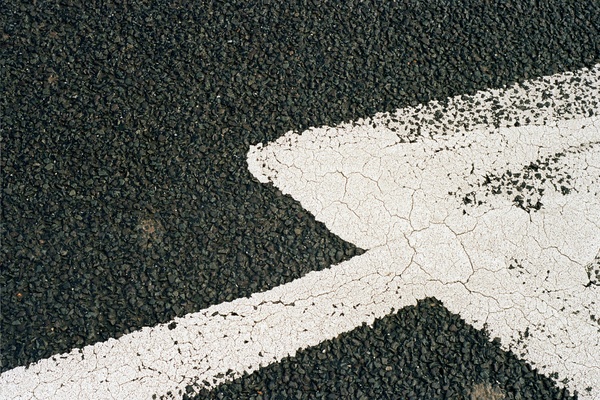
Road marking. Nikon F55 and
Nikon AF 50mm f/1.8D shooting Kodak Portra 400VC.
It's surprisingly fast. It's always dead-on accurate when it hits, but sometimes doesn't hit at all and hunts a lot on low-contrast subjects like skies. Speed is limited by the fact you can only use old screw-type AF lenses, but for the still subjects that film is good for (I prefer my ancient D2H for anything that moves), it's more than fast enough.
It doesn't have an autofocus lock, as such. Rather, it detects whether your subject is moving or not, and if it is, it'll automatically switch between continuous autofocus (tracking a subject's motion) and single-shot (focusing and locking on the subject, allowing you to focus and recompose for a subject that's way off-center). The great thing is? This actually works! It's not, from my tests with still subjects and my rapidly-moving dog, easily fooled by camera movement.
You can pretend that you have an AF lock by focusing, then flicking it over to manual focus. I'd still prefer a proper AF lock button, but that's just me.
Nikon call the autofocus circuits in the F55 "Multi-CAM530" to make it sound like serious business. If they're consistent in their nomclemature, this is the same system used in the D40 and D5000.
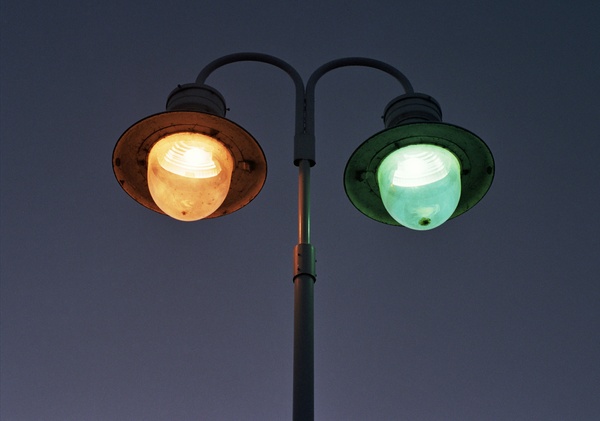
Think different. Nikon F55 and
Nikon AF 50mm f/1.8D shooting a
free film.
Metal focal-plane shutter. It'll max out at 1/2000th of a second, which is as fast as you need on film.
You can't dry-fire the shutter with the back open to see if it's working properly, so you're going to have to run a roll of film through it.
I see no way to attach a remote to it, and the manual doesn't say anything about it, either.

Old Mutual. Nikon F55 and Nikon AF 50mm f/1.8D
shooting Kodak Portra 400VC.
Little built-in pop-up flash. Sadly, flash on the F55 isn't good for anything but nuking subjects with direct flash indoors, not for fill flash outdoors.
The 1/90 flash sync speed is basically useless for the latter. On a bright day at ISO 100, you'll have to stop way down (at least f/16 or f/22 at ASA 100, by my quick and probably inccurate calculations) which, if it doesn't overwhelm the built-in flash, will drastically sap its power (and your batteries).
What makes this worse is that you get no TTL flash metering with external flash guns (even Nikon's very own), so you can't even make up for stopping down so far by sticking a massive external flash gun on it (unless you feel like doing a bunch of calculations in your head). Not that you'd want to stick a massive external flash gun on it; that'd double the weight of your setup and that'd defeat the whole point of using a silly plastic SLR in the first place.
On the other hand, if you do find a situation in which you need (and can use) the built-in flash, Nikon's TTL flash metering should be perfect, as it has been on all recent Nikons.
Two CR2s, same as the other plastic miracle in my armoury. Without flash, Nikon rate it for 45 rolls of 36-exposure film at 20° C, or 27 at -10° C.
CR2s are CR2s. I usually use Energizer or some other brand name for the guarantee (if the batteries wreck your camera, they'll replace it). With that said, I also picked up some very cheap Eunicell batteries to see if they would explode (they haven't).
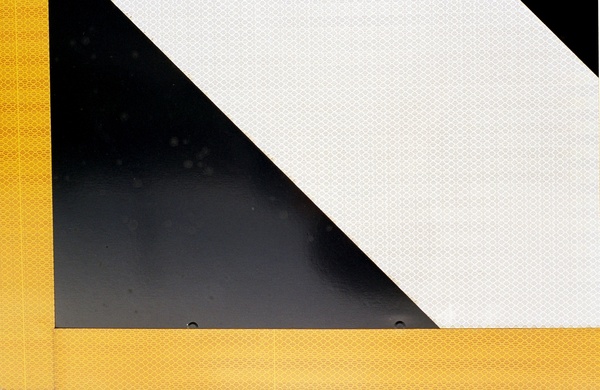
White, black and yellow. Nikon
F55 and Nikon AF 50mm f/1.8D shooting Kodak Portra 400VC.
Why not? I did. I bought this for seven quid, mostly because I thought it was funny, but it turns out that it's actually an excellent performer and incredibly fun to boot. If you've already got a screw-type AF lens kicking around, there's no reason to not get one if you can find it at the right price.

Eric. Nikon F55 and Nikon AF 50mm f/1.8D
shooting Kodak Portra 400VC, matrix meter nailing the backlit shot
dead-on.